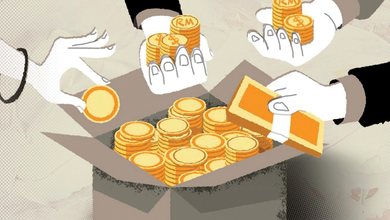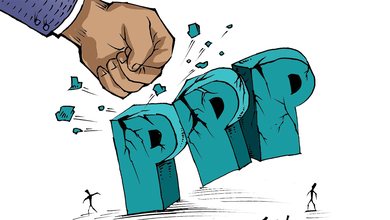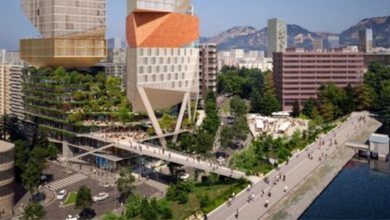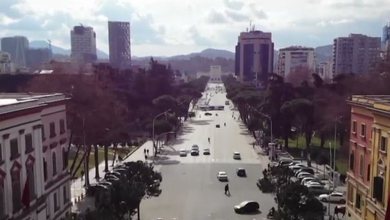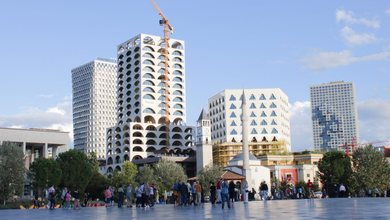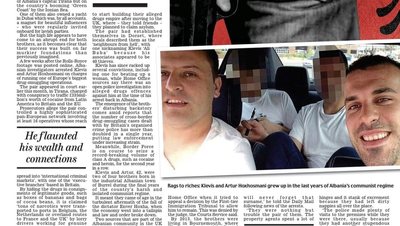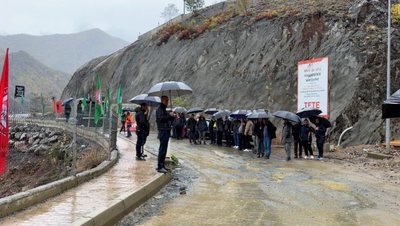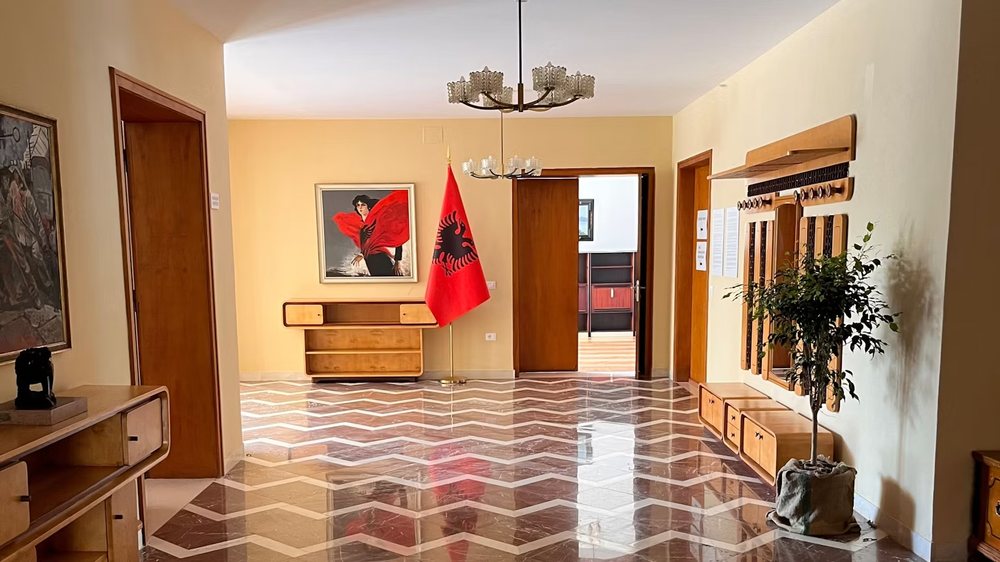
For three decades, Albanian dictator Enver Hoxha terrorized his country. His luxurious residence long lay abandoned. But recently, artists have been living and working there – trying to figure out how to do justice to the house's dark past.
In the evening, the sound of life penetrates the fence, penetrates the large garden and every corner of the villa, where for many years silence had reigned. Electronic music bursts from the surrounding clubs, luxury cars whistle through the streets of Tirana, while on the terraces of cafes and restaurants people chat, laugh, celebrate. Air conditioners hang like flies on the yellowed facades of the buildings, while between them new towers rise, shining silver against the sky of the Blloku neighborhood, the living heart of the Albanian capital.
In the midst of this bustle stands a villa that every Albanian knows – although most only from the outside. Inside it, for more than thirty years, the dictator Enver Hoxha and his family lived, completely isolated from the rest of the country, in a luxury unimaginable to ordinary citizens. Today, during the day, groups of tourists stop in front of the fence to take a look through the windows, while most passersby walk past as if the villa did not exist at all.
Its very existence as a symbol of power and privilege still seems painful. This space has remained a blind spot: until the end of the communist regime in 1991 – six years after Hoxha’s death – entry to this area was strictly forbidden. Until art came along.
Since the beginning of 2025, eleven artists from France, Germany, Italy, Bangladesh and Albania have been living there for three months each. The program is curated by the Art Explora foundation based in Paris. Some work independently, others in collaboration. At the end of the period, each presents the results of their work. As in any cohabitation, in the evenings they cook together, drink beer in a bar, or gather in the large hall for lectures by guest artists.
The guard in the small cabin by the gate has drawn the curtains and is dozing off – there aren’t many visitors. The house, painted in yellow-orange and green, with its carefully manicured garden, cobblestone paths and ponds, looks as if it has been accidentally placed in the middle of a crowded city. The red stone floor, crisscrossed with white zigzags, gleams against the dark wooden cabinets; the velvet-covered sofas look as if no one has ever sat on them.
The furniture was either commissioned by the Hoxha family in the West or specially built for them. After the restoration, only a few white plastic tables and chairs were added for the artists – a sign of a new spirit that had been delayed for forty years.
After the dictator's death, the house sat empty for a while. From time to time, government meetings were held there or diplomats were accommodated during official visits. Some refused to sleep there – like the Argentine writer of Albanian origin Ernesto Sábato, who, when offered to stay in the villa during a visit in 1996, replied that "in the midst of this horror, I wouldn't be able to spend even a night."
For many years, there was debate about what to do with this house, which remains state property and with its curtains permanently closed. A museum? No, it was said, because it would reduce its weight. In the end, it was decided that the answer was art, perhaps also because of the personal history of Prime Minister Edi Rama, once an artist himself. In 2014, an Albanian performance group entered the villa for the first time, but emotions and the limitation of the audience to only one hundred visitors overshadowed the event. After renovations, the first artist residents moved in in January 2025.
The villa's labyrinthine structure is ideal for such a project: each artist has their own dedicated space for work and sleep, alongside shared spaces. But the past clings to this place like chewing gum under shoes – and that makes starting over all that more difficult.
Whoever enters here must face the shadows
Anyone who agrees to live here must accept that they will sleep in the same room where the dictator once slept, or wash their face in the same sink where his wife, Nexhmije Hoxha, washed. For most foreign artists this is not important, but for those with Albanian roots it is.
“At first I couldn’t sleep in this house,” says Erdiola Kanda Mustafaj, 33, a photographer born in Elbasan, about half an hour from Tirana, and raised in Bologna. Her family left Albania in 1997, during the “pyramid firm” turmoil. “The history of this villa cannot be removed,” she says. “When the lights go out in the evening, I feel terribly lonely.”
She shares the fellowship with French curator Anne Bourrassé.
When she tells people where she lives, the answer is always the same: 'There? Never!' Even within her family, she faces rejection. Her uncle, who suffered under Hoxha's regime because he was forbidden to study, cannot understand why she stays there willingly. "He will never talk about that time," she says.
Even her parents, who had started their lives anew after emigrating to Italy, rarely spoke about the past, despite her questions. “Albania suffers from a national amnesia,” Mustafaj says. “I think that to this day the country has not managed to face its history.” Only recently, her mother had confessed to her that she had cried the day Hoxha died. “At least it’s a first step,” she adds with a bitter smile.
A past suppressed in silence
Much of Hoxha's period continues to be idealized, writes Albanian historian Elidor Mëhilli, who teaches at the City University of New York. This, he says, is due to the fact that the Sigurimi archives remain closed. This lack of knowledge gives rise to myths that have not been questioned for decades. "It is surprising how little is known today about the most elementary facts of that time," says Mëhilli. The processing of the past has begun slowly; a real change in the political elite has not occurred for many years.
Hoxha’s Albania was a paranoid country. He saw enemies of the state not only outside the borders, but also inside every home. The Sigurimi, the secret police, became the most powerful instrument for surveillance of the people. Even the smallest imaginary actions were declared crimes; anyone could be declared an “enemy.” Tens of thousands were sent to labor camps or internment, thousands were tortured and executed.
Even in Bllok, the “forbidden city” in the heart of Tirana, no one was safe. Only high-ranking members of the Communist Party lived there, cut off from the city, with separate shops, cooks, and doctors. Historian Mehilli describes this neighborhood as a “hotbed of jealousy and paranoia.”
Hoxha built hundreds of thousands of bunkers, destroyed most of the churches and mosques. In 1967, he declared Albania “the first atheist state in the world” and completely isolated it. From this villa, where he lived with his wife, children, and grandchildren, he decided everyone’s lives.
From isolation to openness
In Hoxha's study, there are still the high shelves where books once stood that were forbidden to the people. While all Western influence was forbidden, they made an exception for themselves. Even foreign travelers had to submit to his absurd rules: short skirts and long hair were forbidden; a barber with scissors was waiting at the airport.
Now, the lockdown is over. In April 2025, the villa opened its doors to the public for the first time. According to project manager Nita Deda, about 15,000 visitors came to see the common areas and some of the artists’ rooms. “People wanted to see every corner – the private elevator, the cinema, the bedrooms, the swimming pool that was never used.”
The most common reaction, says Deda, was: “What a luxury, while we were struggling to survive!”
Since then, events have been held every weekend: film screenings, readings, workshops for children, and dance classes for the elderly.
Memory through art
For their scholarship, Mustafaj and Bourrassé are working on the history and language of the Chams, a Muslim Albanian population killed or expelled from Greece between 1913–1945—a history that includes Mustafaj’s grandparents. Old maps, paintings, and press articles hang on the wall that testify to this denied chapter.
Meanwhile, Kairo Urovi, a 25-year-old of Albanian origin, born in Italy and living in London, abandoned his initial project as soon as he entered the villa. “This place slammed my family history in my face,” he says. He initially wanted to work on the theme of invisibility, but “here the history is too heavy.”
His family had suffered from poverty and fear. His mother told him how she would wake up at three in the morning to stand in line for a kilo of meat. The constant fear that one might be spied on by neighbors marked daily life – and is still reflected in the behavior of his parents. His uncle had fled to Greece, his father to Italy and never returned. “About four million Albanians left the country; today there are only about 2.5 million left,” he says.
However, Urovi is torn between gratitude and doubt. “I’m not sure if it’s a good idea to turn this house into an artists’ residence,” he says, adjusting his glasses. “Yes, it’s right that the place should be revived, but I’m afraid that in a few years people will forget what happened here. It would be fatal for Hoxha’s bloody history to fade behind the brilliance of artistic projects.”
He, like Mustafaj, has not found peace in his sleep. “The first month I couldn’t sleep at all.” The figure of Nexhmije, who in an interview with Spiegel in 2004 had declared that “we have never killed without reason,” haunted him. “This villa is challenging. The elephant is in every room,” he says.
(Süddeutsche Zeitung, September 26, 2025, Julia Rothhaas)





